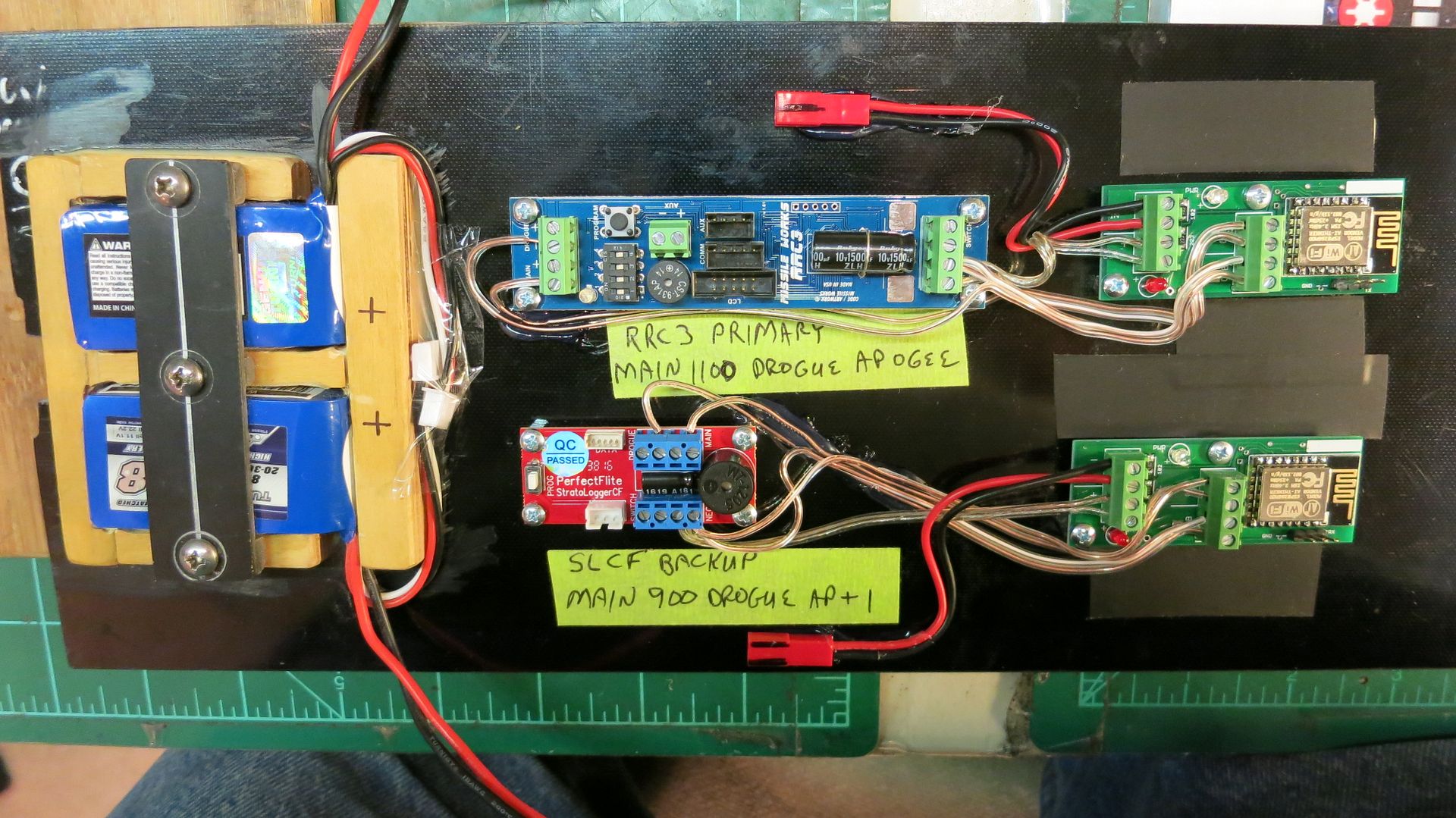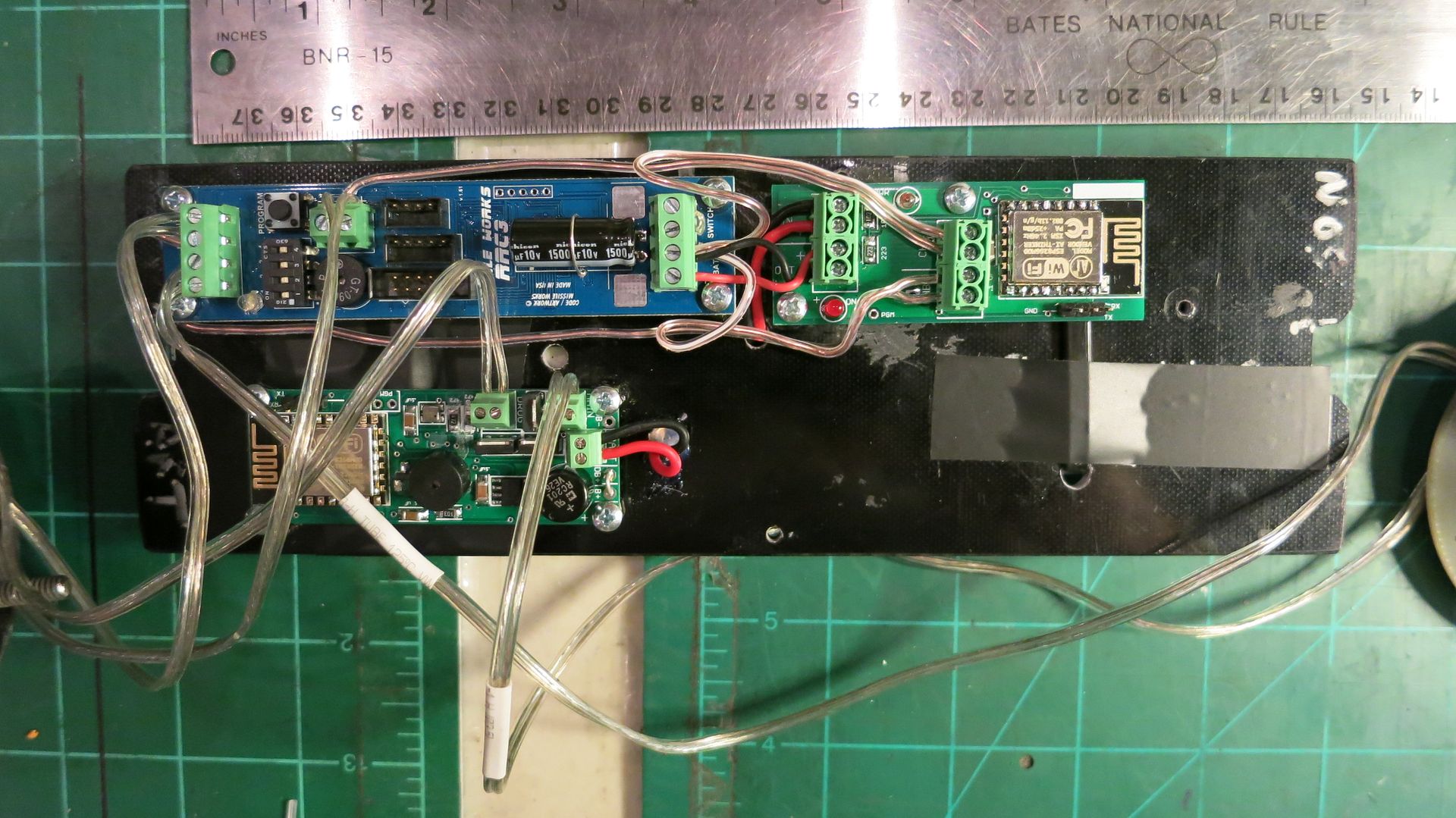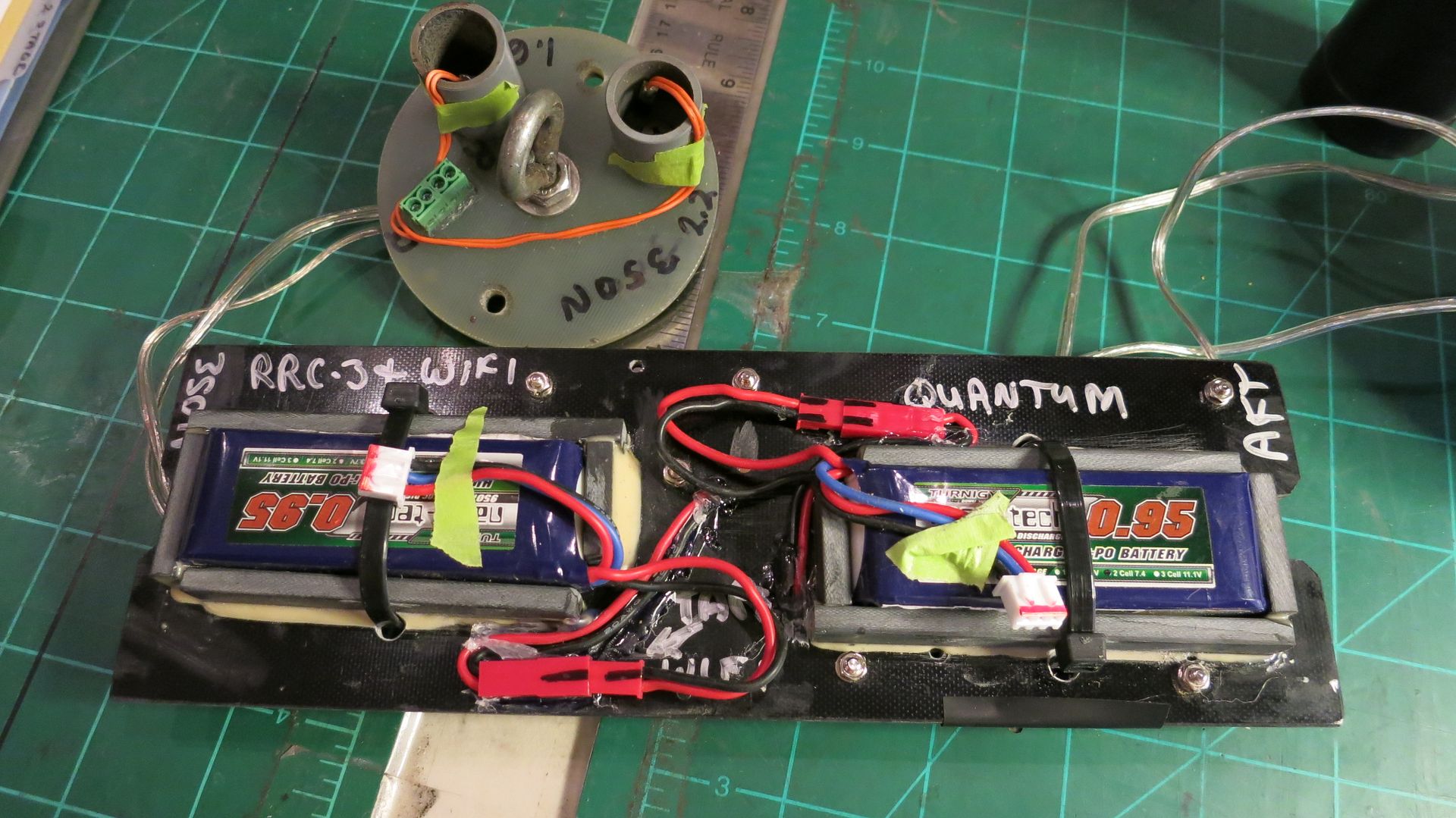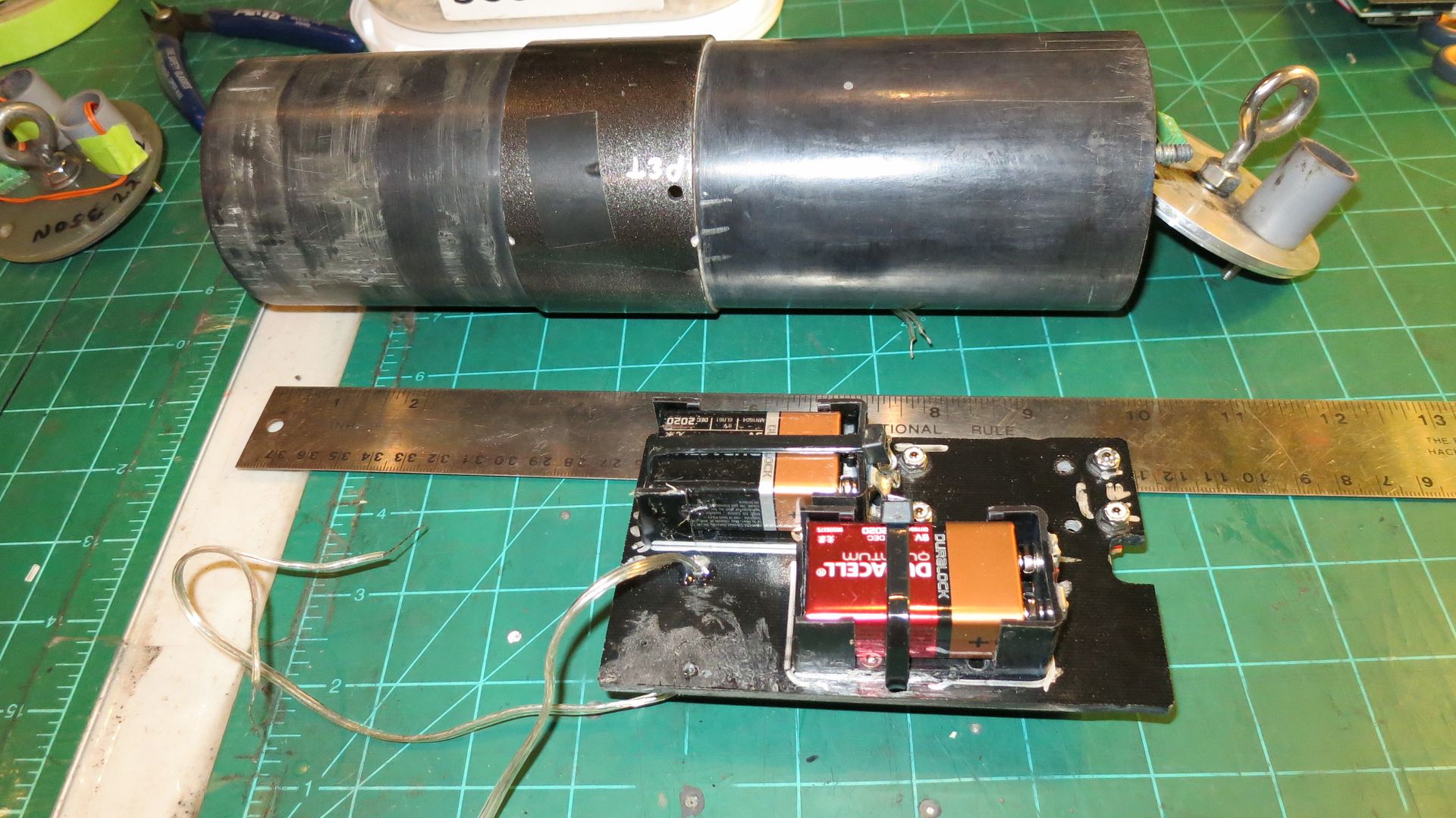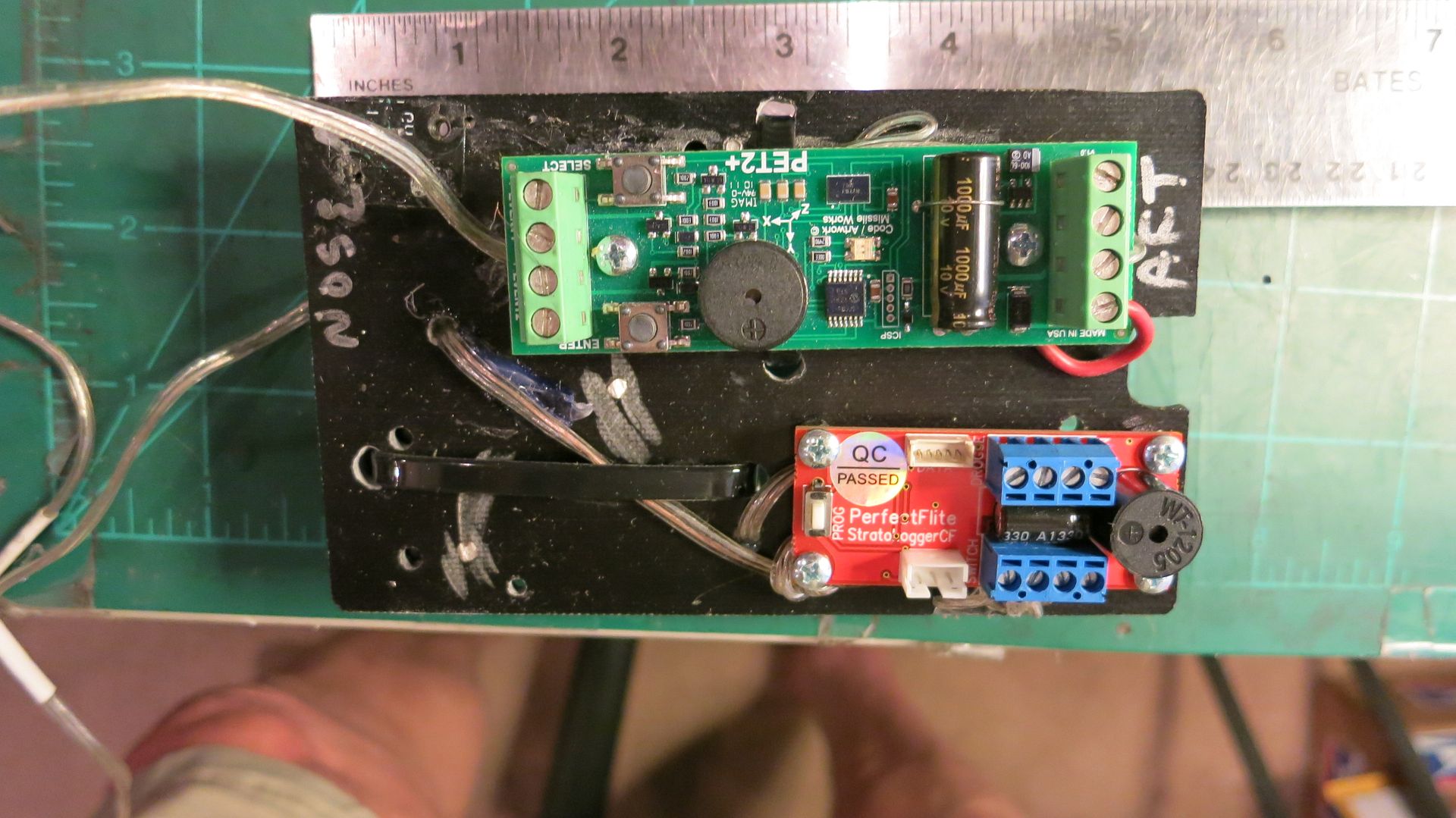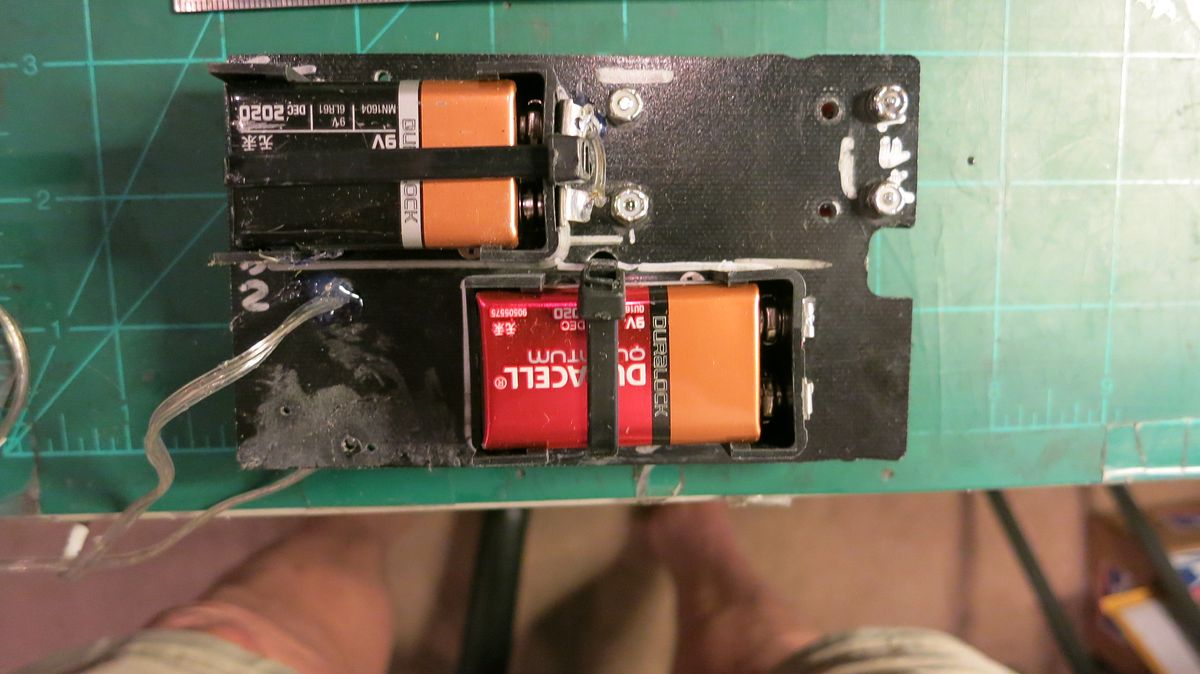JimJarvis50
Well-Known Member
- Joined
- Jan 17, 2009
- Messages
- 2,882
- Reaction score
- 1,786
Jim,
I think this is what I love about staging, I had to read that a few times to understand the proceedure.
So I assume the easymega is connected to the deployment charges? If so you could add the same switch or shunts to the deploment channels to remove the risk you are concerned about.
You are really testing the easymega at this point, which I agree with, but is there a reason the PF CF and timers need to be on outside of the easymega?
Those are my intital questions but I will take a look again when I get home from work.
Thanks for taking a look. I think it is good to ponder how these wifi switches get incorporated into staging. There are many issues (and I thought I'd seed the discussion with my issues).
The easymegas control the motor ignition events but also multiple deployment and separation charge events. Only the ignition circuit has the shunt switches. When the wifi switch closes, it just turns on the easymega, just as would happen if you closed a manual power switch for the altimeter. Since you wouldn't normally use switches on deployment charges (altimeters are reasonably good at not firing charges on power-up), there isn't really a need to install them. My concern was about manually lifting a rocket from horizontal to vertical with charges live as part of the all-up test. This would be what happens in the actual arming sequence, but the all-up test could be modified to avoid this particular hazard (just turn on the other electronics after the rocket is vertical, and before closing the wifi switch, instead of when it is horizontal).
In general, however, there will be the issue of how to arm the other electronics if you are using wifi to arm your motor ignition. One option would be just to climb the ladder for these other electronics. I can avoid that for my flight because there is no real hazard arming these with the rocket horizontal (no people are needed to lift the rocket), but this might not work in most cases. Another option would be to use a single wifi switch to power all of the electronics. I think you lose too much redundancy doing this. Maybe the best option is just to have separate wifi switches for each altimeter/timer (or get wifi-enabled altimeters). In a new build, this is what I would do, although hearing the continuity indications with the rocket horizontal is an advantage for me. The three stager has eight devices that make noise - it's quite a symphony when everything is turned on.
Jim





